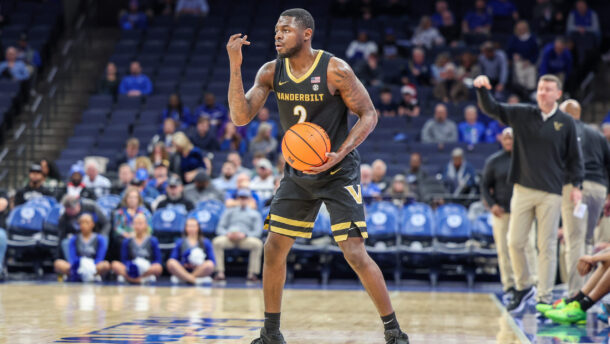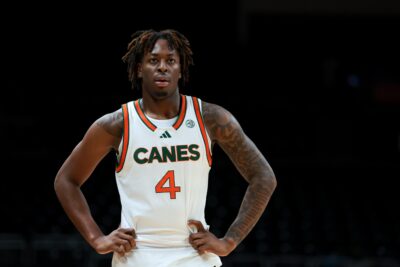How can Alabama get back to the apex of college football? SDS’ very own Chris Walsh lays out a five-part series on how the Crimson Tide can become college football’s premier team once again.
Reclaiming the crown series:
- Alabama needed an attitude adjustment
- Nick Saban brought back most of his initial coaching staff
- Alabama continues to add talent
- Defense still wins championships
- History is on the Crimson Tide’s side
It was the initial big topic of discussion at the Southeastern Conference’s Media Days in Birmingham last week, so naturally it didn’t take Nick Saban long to be asked about the inaugural year of the college football playoff and its potential expansion.
Like usual, the University of Alabama coach used the opportunity to make a couple of points.
“In our league you have 15 games to win and if you expanded the playoff more than that,” he said. “Maybe you could expand the playoffs and eliminate the conference championships if there was an eight-team playoff, because every time we play in it it is a playoff game. We played Georgia, they were No. 3 and we were No. 1. We played Florida two years in a row and were both 1 and 2. So it’s a playoff game. Whoever wins goes in and whoever loses goes home.
“So in our league I guess we already have an expanded playoff.”
The way Saban emphasized the last sentence drew laughter from listening reporters, but there was a lot more to what he said than expressing concern about the wear and tear of players. He also reinforced the idea that history is on the Crimson Tide’s side, even though the “going home” part may no longer be true in the post-Bowl Championship Series era.
A perfect example why was last season, because even though Alabama took the dramatic 34-28 loss at Auburn to close the regular season, it would have remained in the title hunt had the playoff already existed. At the time the Crimson Tide was 11-1 and still ranked in the top four of the BCS standings behind Florida State and Ohio State, both 12-0, and 11-1 Auburn. With the SEC Championship Game in Atlanta featuring Auburn vs. No. 5 Missouri (11-1), and one of those teams having to lose, Alabama would have been a strong bet to play in the semifinals.
A week later, after Auburn won and Ohio State lost to Michigan State for the Big 10 title, had there had been a selection committee it almost certainly would have paired 1. Florida State vs. No. 4. Michigan State; and No. 2 Auburn vs. No. 3 Alabama. Yes, there would have been a rematch at a neutral site.
“The committee will select the best four teams, period, no strings attached,” executive director of the college football playoff Bill Hancock explained. “They won’t monkey with the pure seeds. If the pure seeds are 1, 2, 3, 4, Auburn is 2, Alabama is 3, they’ll leave them right there and they will be a rematch. There’s no dropping of lines in the College Football Playoff.”
By that same logic, the previous five pairings would likely have been as followed:
- 2012: 1. Notre Dame vs. No. 4 Oregon; No. 2 Alabama vs. No. 3 Florida
- 2011: 1. LSU vs. No. 3 Stanford; No. 2 Alabama vs. No. 3 Oklahoma State
- 2010: 1. Auburn vs. No. 4 Stanford; No. 2 Oregon vs. No. 3 TCU
- 2009: 1. Alabama vs. No. 4 TCU; No. 2 Texas vs. No. 3 Cincinnati
- 2008: 1. Oklahoma vs. No. 4 Alabama; No. 2 Florida vs. No. 3 Texas.
In short, Alabama would have been in every playoff minus one, 2010. No other program would have been in more than two.
While the Crimson Tide’s absence in the title game last year has helped lead to some coaches taking verbal shots at Saban while they can (including Bob Stoops, Rich Rodriguez and Dana Holgorsen), oddsmakers have done the exact opposite. According to Bovada, reigning champion Florida State with Heisman Trophy winner Jameis Winston is the team to beat this season, with the Seminoles 11/2 favorites, just ahead of Alabama at 6/1. But history also suggests that no one should bet against Alabama from at least making the playoff either.
After winning the 2011 and 2012 BCS titles, last season the Crimson Tide was the 11th program to go for a three-peat since the Associated Press poll came into existence in 1936. Of course, all failed. But how many would have qualified for a theoretical playoff the subsequent rebound year? For our purposes two teams can be dismissed because they had coaching changes: Bernie Bierman left Minnesota (1940-41) to serve as a Marine during World War II, while Bob Devaney stepped aside from Nebraska (1970-71) and assistant Tom Osborne took over. Also, Southern California has since vacated the 2004 title following NCAA penalties, while its 2003 championship wasn’t consensus. Although the AP had USC at No. 1, LSU under Saban took home the crystal football.
So here’s how well the other seven programs rebounded:
1944-45 Army: A scoreless tie against Notre Dame at Yankee Stadium snapped Army’s 25-game winning streak for a No. 2 finish in 1946, when the Fighting Irish was awarded a controversial national title. Earl “Red” Blaik went 5-2-2 in 1947, and was narrowly out of the top four after a tie to Navy in 1948 (8-0-1), but Army almost certainly would have qualified in both 1949 and 1950.
1946-47 Notre Dame: The Fighting Irish followed the two controversial titles with a 9-0-1 season to finish second to Michigan in 1948. Frank Leahy’s team responded with a perfect 10-0 season to claim the 1949 championship.
1955-56 Oklahoma: The titles came during Oklahoma’s amazing 47-game winning streak that was eventually snapped by Notre Dame in 1957, which prevented the three-peat. Bud Wilkinson’s program came back to post a 10-1 record in 1958, which had it at No. 3 heading into the bowls.
1964-65 Alabama: The Crimson Tide benefitted from the AP’s decision to move the voting for its final poll to after the bowl games were played, but regardless in 1966 went undefeated only to be snubbed in favor of Notre Dame and Michigan State, which had played to a lackluster tie. In the rebound year Alabama went 8-2-1 to finish the season ranked in the top 10.
1974-75 Oklahoma: After a 10-0-1 and No. 2 finish in 1973, Barry Switzer’s teams lost just one game over the two-title season before posting a 9-2-1 record in 1976. The Sooners were the preseason No. 1 team in 1977 and ranked second at the end of the regular season before losing to Arkansas in the Orange Bowl.
1978-79 Alabama: Crimson Tide fans point to the controversial No. 2 finish in 1977 as robbing the program of the three-peat, but after going 10-2 in 1980 Alabama rebounded well and was No. 3 at the end of the 1981 regular season.
1994-95 Nebraska: After the two perfect seasons Nebraska’s 26-game winning steak was snapped at Arizona State in 1996. The Cornhuskers responded with a 13-0 season and controversial split national championship with Michigan.
In short, every program was in the running during the rebound year, and all but two would have likely been part of a four-team playoff. Alabama hopes to do likewise on Selection Sunday, Dec. 7th, and subsequently reclaim its crown as the kings of college football.
“Personally, I don’t talk about it,” junior wide receiver Amari Cooper said. “At the end of the day, it’s the same thing. You have to win. You have to win and win to win the national championship.”
Christopher Walsh has covered Alabama football since 2004 and is the author of 19 books. In his free time, he writes about college football.






